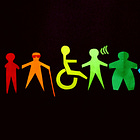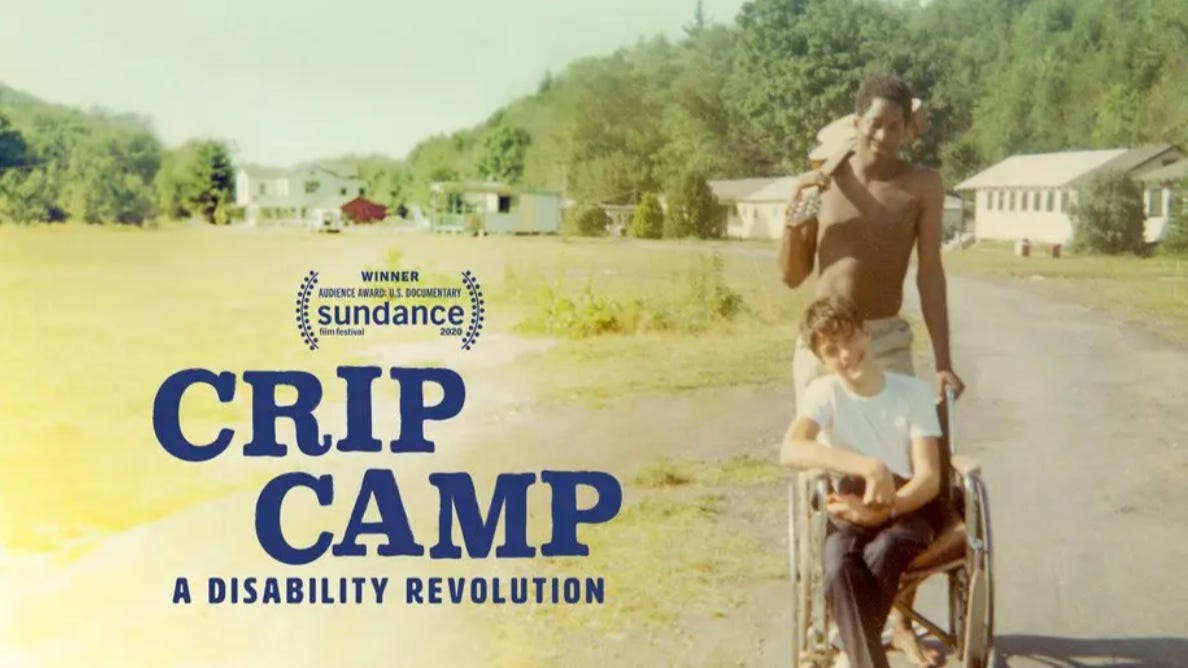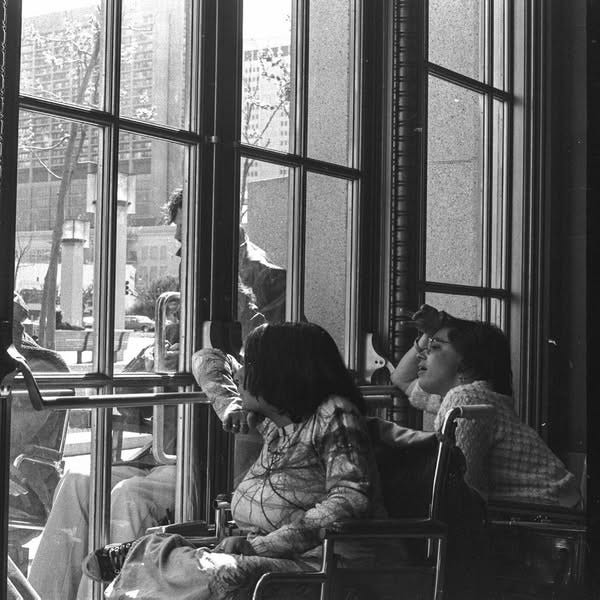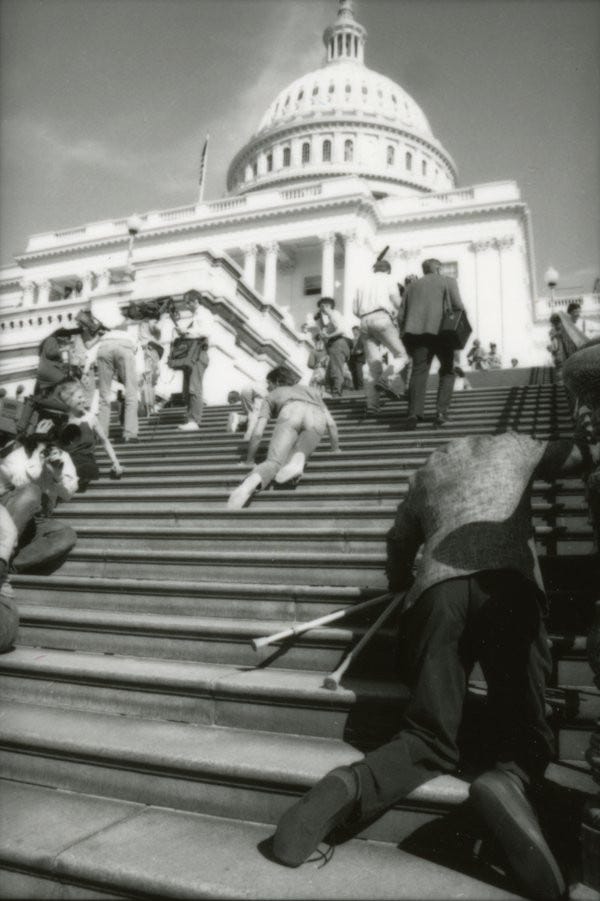Why is Disability Pride Month in July?
A history lesson.
All year, I have the pleasure of speaking with many disabled individuals at various events. Someone recently asked me why we celebrate Disability Pride Month in July.
In today's edition, I encourage you to learn more about the history of Disability Pride Month by watching the Netflix documentary, Crip Camp: A Disability Revolution.
But first, while I have you here. This newsletter is my effort to share what I learn and unlearn about disability, inclusivity and accessibility. I write these as I experience periods of disability, where work or life takes second place to resting my spine. Please consider subscribing, sharing, liking and commenting.
Why is Disability Pride Month in July?
No, it's not related to LGBTQIA+ Pride month. However, I did write about the parallels in an earlier edition.
The answer lies in a pivotal moment in American civil rights history: the passing of the Americans with Disabilities Act (ADA) in July 1990. At the time, it was the world’s first comprehensive civil rights legislation protecting the rights of people with disabilities.
It would be another two years before Australia introduced the Disability Discrimination Act (DDA) in 1992, and 14 more years before the United Nations adopted the Convention on the Rights of Persons with Disabilities (CRPD) in 2006.
The activism that led to the ADA is powerfully told in the Netflix documentary Crip Camp: A Disability Revolution. It follows a group of disabled teens and adults who first connected at Camp Jened — a summer camp in New York that ran from the 1950s to the 1970s. The sense of community, connections and political awakening sparked there became a catalyst for a national - and international - disability rights movement.
These rights were never handed over — they were fought for.
Two iconic moments, decades apart
The 504 Sit-in in 1977 “began when protestors took over a San Francisco federal building for 26 days to demand that regulations for Section 504 of the Rehabilitation Act be signed”. Section 504 outlawed discrimination on the basis of disability when receiving federal financial assistance, a critical step in securing disability rights. Without it, the disability community feared they would continue to be lawfully left behind.
Then, in March 1990, came the Capitol Crawl. Sixty disabled activists left their mobility aids and crawled up the steps of the U.S. Capitol, poignantly illustrating the physical and systemic barriers they faced. Weeks later, the ADA was passed.
While Crip Camp tells an American story, the exclusion and resistance it depicts are global. Pride in disability is not just about identity — it’s about survival, community, and justice.
For me, Crip Camp was an emotional watch, seeing how hard-fought today's disability rights have been. And the impact, decades later, of friendships formed as kids and young adults.
Mostly Unlearning Prompts
History like this is a lesson, as you watch, consider some Mostly Unlearning prompts
In what ways was Camp Jened surprising?
Did you expect the personal effort required to be recognised?
Parallels with disability rights in Australia and New Zealand
What progress has been made, and what progress is there still to make? Or protect?
Mostly Unlearning
Whether you’re here as a colleague, designer, leader, policymaker, or disability advocate, thank you for unlearning with me.
One of the core tenets of Mostly Unlearning is that our systems shouldn't rely on individual bravery, but they often do. And when they do, it's disabled people who carry the heaviest load.
The habit of inclusion is underpinned by learning and unlearning. Mostly unlearning.
Join the unlearning.
My work is geared towards shifting systems to alleviate pressure on people, alongside commercial outcomes. You can subscribe to learn with me. I'll share what I learn (and unlearn) about accessibility, inclusion and disability. Together, we will consider the implications for impactful commercial and human outcomes.





